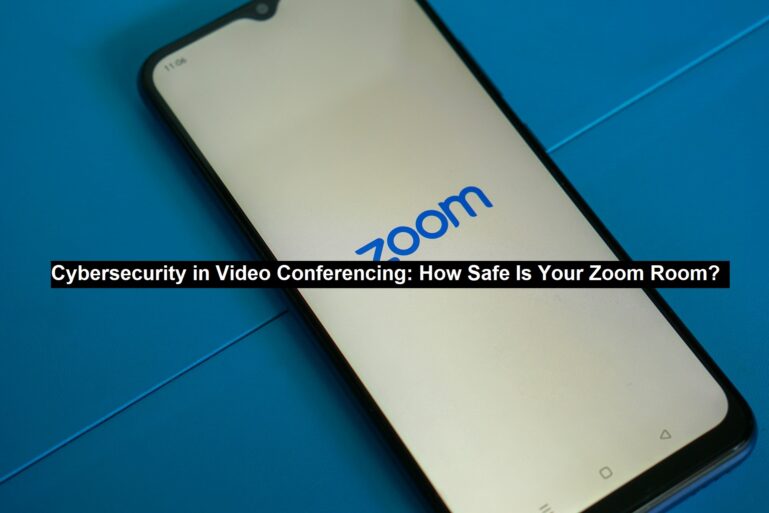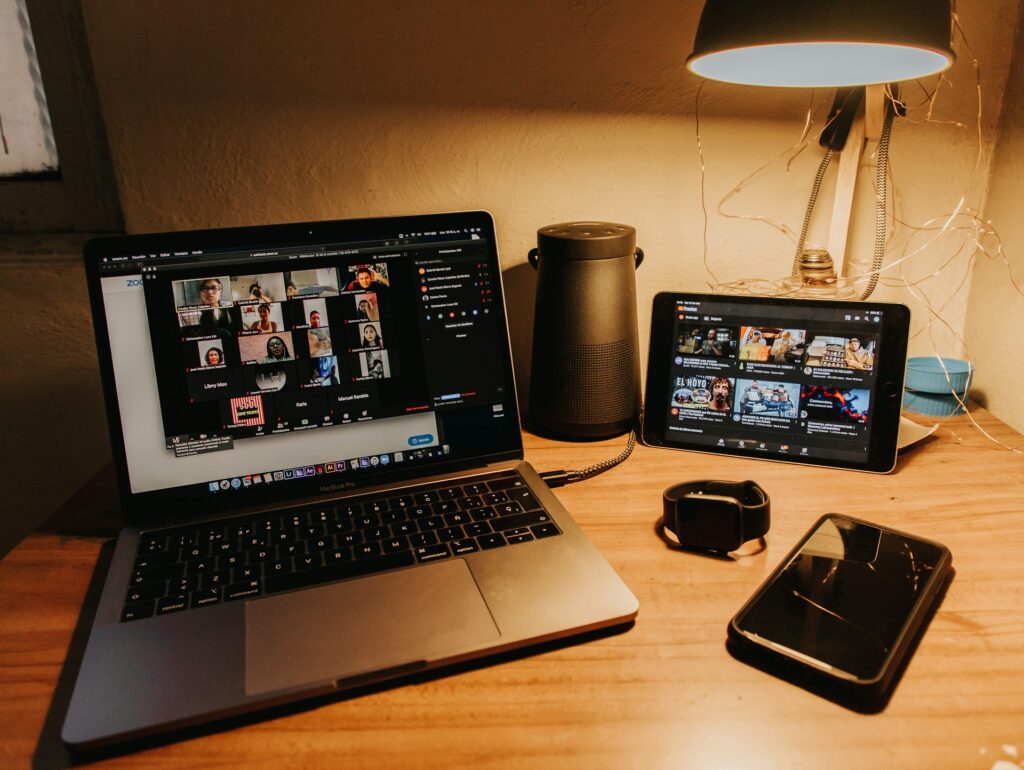Cybersecurity in Video Conferencing: How Safe Is Your Zoom Room?

Virtual meetings have been the new norm since COVID altered the traditional work setting forever. With many businesses permanently moving their operations from the office to hybrid or fully remote arrangements, video calls may be a regular part of your routine, too.
But what if you work with sensitive or proprietary information? How can you ensure your Zoom Room is secure and safe during meetings? The answers you seek are here.
There are several built-in safeguards for Zoom Rooms that are easy to find and use, and you can take additional steps to protect your organization and the information you handle on a daily basis. Take a look at this guide to review what features you can expect Zoom to provide and what else you can do to upgrade their offerings.
Security From Zoom
Zoom strives to ensure a completely secure environment with unique digital security features, but you’re responsible for many of the steps before setting up a meeting to ensure you’re taking advantage of them. Take a look at these top tips when creating your meeting room.
- Use Passcodes & Waiting Rooms
When you create a meeting, you have the option of using a password that allows only authorized users to join once the call starts. Set the passcode and share it with participants to prevent any unauthorized access.
Waiting rooms are also a great way to protect your virtual meetings. If you’re concerned that participants may share the Zoom meeting code with an unauthorized individual, set up a waiting room that allows you to manually approve each person who logs on before a meeting. Only once you usher them through the waiting room, can they get into the meeting itself.
Read: Revolutionizing Fund Management with AI: A Strategic Transformation
- Use Unique IDs
You can use your personal meeting ID or a unique meeting ID when generating a Zoom Room. A unique meeting ID generates a random link for your meetings that goes out only to meeting participants. For recurring meetings where you don’t want to use a new link each time, you can protect the link through controlled access.
- Change Participant Controls
Once the meeting has started, you can also control the security during your call with participant control settings. You can decide who can share their screen, transfer files, and use the chat feature. You may also choose to disable auto-entering a meeting so people only enter once the host is available.
- Locking Meetings After They Start
Zoom has a setting that allows you to lock a meeting down once every authorized participant has entered. Once you lock down a meeting, nobody else can join, send messages, or get access to it in any way.
- Booting Unwanted Participants
Sometimes, an initially authorized user should no longer be part of a meeting. If they won’t leave on their own, you can remove them using the Remove Participant feature. You can also disallow their account for this particular meeting to ensure they cannot rejoin it once removed.
Additional Steps to Take

Zoom offers a variety of ways to protect your meeting and keep data secure, but you should always take additional steps to ensure cybersecurity best practices. Here are a few things you can do in addition to Zoom’s meeting room features.
- Two-Factor Authentication
Even using strong, unique passwords may not be enough to ensure organizational security. Make sure everyone on your team is keeping cybersecurity in mind when you require two-factor authentication for every login. This extra layer of protection could prevent an unauthorized user from logging in even if a password has been compromised.
- Use AI Support Tools
Many cybersecurity companies offer assistance with detecting gaps in your security using AI support tools. These tools can help safeguard data, improve encryption, and identify phishing emails before they reach the intended recipient. AI can also use its predictive capabilities to suggest a stronger defense against the potential cyber attacks that may target your organization specifically.
- Report a User
While you can report a user to Zoom’s Trust & Safety team to review any potential misconduct and prevent such activities in the future, if you’re in any immediate danger, you should also reach out to alert the police. Let them know about any cyber stalking, threats, or other dangerous behaviors this person has exhibited.
- Cybersecurity Training
Every organization that works with sensitive information in a digital world should regularly undergo training to prevent leaks or breaches due to social engineering tricks or software attacks. Some of the most common cybersecurity attacks include:
- Phishing: Scammers use a fraudulent form of digital communication, like email or text, to trick people into revealing sensitive information, including passwords. They often impersonate a trusted individual.
- Malware: Malicious software which bad actors use to try to get into your network to disrupt operations or steal information. Common malware includes spyware, Trojan horses, and ransomware.
- DoS: This type of cybersecurity attack doesn’t aim to steal information. Rather, it disrupts operations for a limited amount of time. It prevents authorized users from accessing servers by flooding the system with requests in order to overwhelm it.
- Social Engineering: This technique uses psychology to manipulate the people in your organization to take the actions the hacker desires. Typically, these types of attacks threaten legal or police action against an individual, claiming that they broke the law.
- Keyloggers: A keylogger is exactly what it sounds like—a tool that logs keystrokes to determine the sensitive information a victim is working on before sending this data to a bad actor. Keyloggers can record user names, passwords, and other sensitive information.
These are just a few of the top cybersecurity attacks that people may use to target your organization, but there are many more. Educating your team will prepare them to prevent such attacks.
Improve Your Meetings
Now that you have the digital tools to improve your Zoom meetings, it’s time to ensure your hardware can keep up. Explore Zoom room equipment that can enhance your operations with sight cameras, table stands, sound bars, tap controllers, and more to ensure your team looks and operates like the pros they are.
